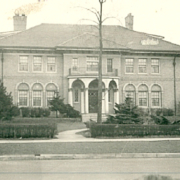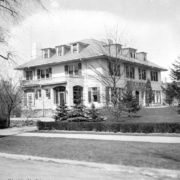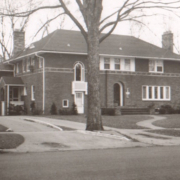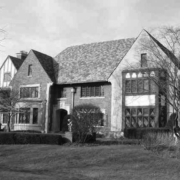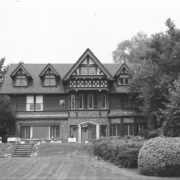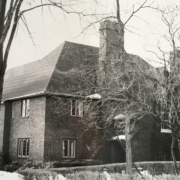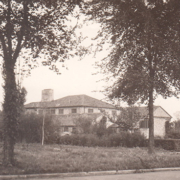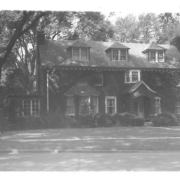Historical Architecture of Grosse Pointe – Joseph P. Jogerst
Last week we explored 15410 Windmill Pointe. The sprawling estate was completed in 1924, by Alfred Hopkins & Associates for William Pickett Harris, Jr. an investment banker and a significant authority on zoology.
This week we turn our attention to the work of a lesser-known designer Joseph P. Jogerst, born in Marathon, Wisconsin in 1884. While he only created a couple of homes in Grosse Pointe Park – 1006 Whittier Rd and 1000 Devonshire – it appears he was a leading name in the design of apartment buildings in Metro Detroit during the 1920’s, and the mid 1940’s.
Joseph P. Jogerst arrived in Detroit during the early twentieth century and quickly became an active and respected designer in the city. One of his earlier projects in Detroit was the Milner Arms Apartments, originally known as the Hotel Stevenson, completed in 1913. Around 1915, it is reported Joseph Jogerst, along with associate Harry B. Hoffman, were the lead designers of the Purity Theater, to be constructed in Saginaw with a seating capacity for 600 persons.
The early 1920’s was something of a ‘heyday’ for Joseph Jogerst. In 1922, he designed an apartment building located on Viewood Avenue, between Lafayette Blvd and West Fort Street. Twelve months later, in 1923, he completed his design for a Detroit investor for twin structure apartment buildings, located on Clairmount Avenue between Wilson and Bryon Avenues. Both buildings contained 33 suites of three and four rooms each. Source and image: Detroit Free Press, 1923.
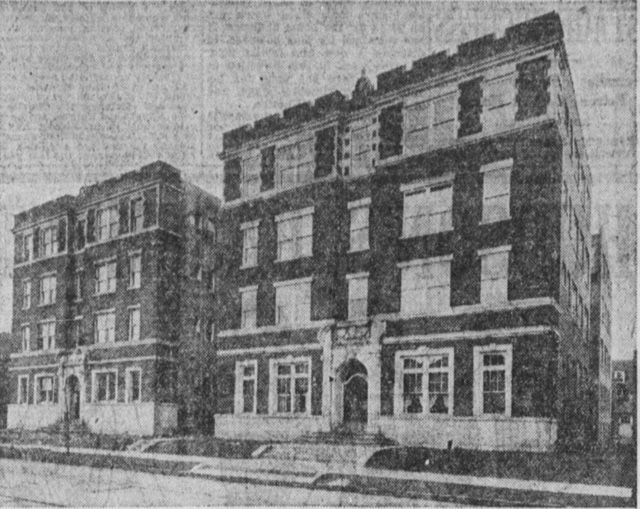
The following year, in 1924, Joseph Jogerst completed the new “Ambassador Hotel”. The hotel had 100 rooms and, according to an article in the Detroit Free Press (1924), “was built for bachelors”. That same year he designed a 40-apartment building on Harding Avenue. The building, trimmed with buff face brick and cut stone, had a highly glazed green Spanish tile roof. Source and image: Detroit Free Press, 1924.
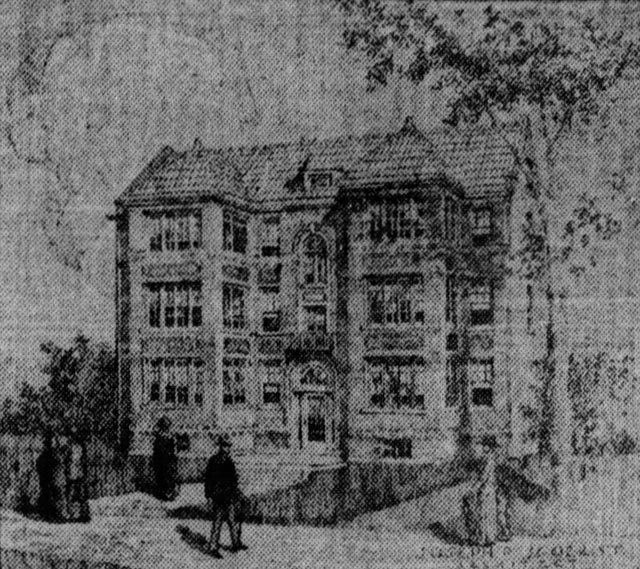
During 1927, Joseph Jogerst designed the Trombley Apartments, located on Hibbard Avenue, prices started at $125,000 (around $2m today) . That same year he also completed the Belleterre Apartments, located on Bordeaux Avenue, prices started at $50,000 (around $890,000 today) – Source: Detroit Free Press, 1927. Twenty years later, in 1947, Jogerst designed the first “Postwar De Luxe apartment” – Lowell Manor – located at 390 Whitmore – erected exclusively for rental. “The modern structure incorporated many advanced ideas and “niceties” which made for generous living”. It was estimated, at the time, the structure was going to cost more than $1,000,000 to build (around $13m today). Source Detroit Free Press 1947.
Joseph P. Jogerst married Antoinette E. Metz in 1907. He was a member of the Michigan Architectural Society and the Michigan Society of Engineers. He passed in Detroit, 1948
We believe Joseph Jogerst created at least two residential projects in Grosse Pointe – 1000 Devonshire and 1006 Whittier.
1000 Devonshire
1000 Devonshire was completed 1924. It is a 4,200 sq ft center entrance Italian Renaissance style home. The property is constructed of yellow brick with a low-slopping green tile roof and overhanging eaves. The entrance is particularly stunning with a large curved central portico, supported by four columns. The front of the home also has multiple curves and arches that are associated with this architectural style. The front elevation of 1000 Devonshire is comparable to the design of 285 Washington, created by Louis Kamper in 1912, also an Italian Renaissance styled home.
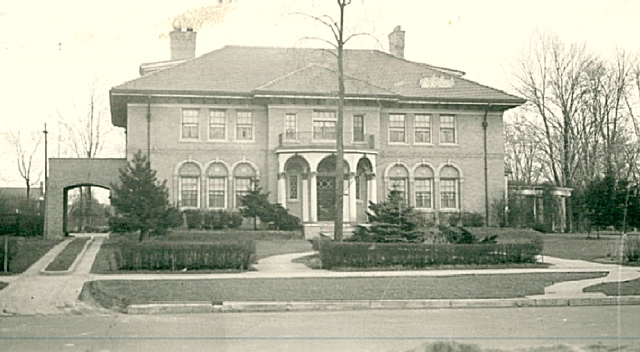
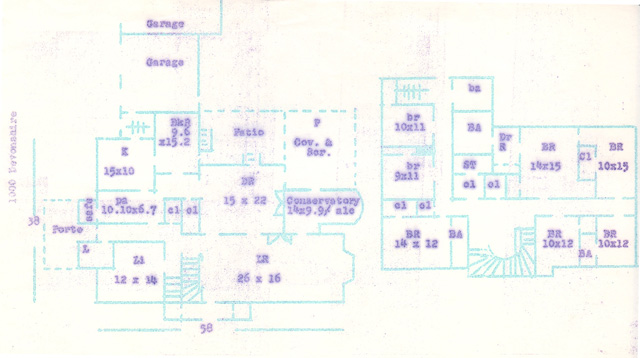
With an abundance of fine architectural details, the main floor features a large 26’ x 17’ sq ft living room, a 22’ x 15’ sq ft dining room, a 14’ x 15’ sq ft library, along with a 10’ x 17’ sq ft conservatory with a fountain. The second floor once had five main bedrooms, two further bedrooms for maids, a cedar closet, and a small prayer room. It appears when the property was first built it was a thirteen-room house with a sleeping porch, and a playroom on the third floor. The estate also once included a swimming pool, and a tennis court. The property was built for Peter J. Christy a veteran phonograph operator and a real estate investor.
During the early 1930’s it is reported the Christy family fell victims to the Great Depression. 1000 Devonshire was deeded over to the Detroit Trust Company – it was listed for sale for $40,000 (around $900,000 today) and offered for rent at $200 per month (around $4,500 today). It appears the property was rented for several years and sold during the early 1940’s.
1006 Whittier
1006 Whittier is a 3,517 sq ft five-bedroom Georgian Revival home, competed for Donald E. Bleakly in 1938. The property has a welcoming center entrance, featuring an expansive covered veranda and eight pillars that run from the ground to the flat roof. As with many Georgian Revival homes, built in the 1930’s, the property is a symmetrical brick-built residence that features multiple double hung windows (with black shutters) and a cornice around the roof line (a horizontal decorative molding that crowns a building). Inside, the property features several French doors, including upstairs in the main bedroom, opening to the balcony, with its wrought iron railing, which overlooks the enclosed back porch & yard. Much of the main floor has many decorative architectural elements, pegged hardwood floors, and a large fireplace in the 13’ x 23’ sq ft living room. Post 1970, a 20’ x 10’ sq ft two-story screened-in porch was added to the back of the house.
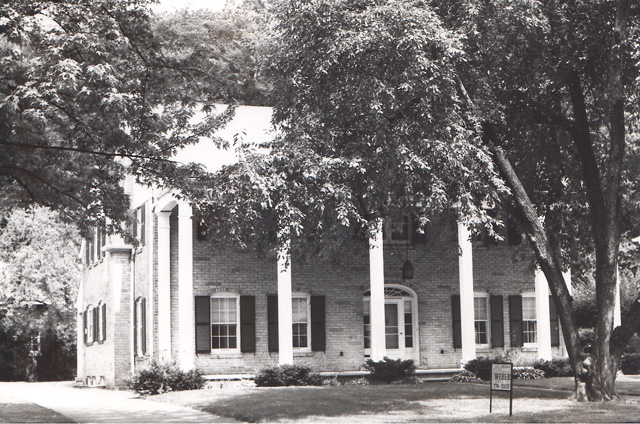
It appears the Bleakly family resided in the property until 1942, when it was listed for rent for $250 per month (around $4,500 today). Meanwhile, the Bleakly family moved to a large property on Dwight Street on the banks of the Detroit River. Interestingly 1006 Whittier is very similar in style to a house Joseph Jogerst had completed in 1930, located at 9090 Dwight Street. It is reported Jorgest designed several grand homes on Dwight Street during the 1920’s and 1930’s.
Joseph Jogerst had a rich and varied career during which time he created many beautiful residences, apartment buildings and hotels throughout Metro Detroit. Joseph Jogerst’s work is part of a series we will be featuring over the summer that will cover the work of some of the lesser-known architects who have designed homes in Grosse Pointe. While these artists may not be household names, as talented and respected designers they have made an important contribution in creating the architectural scene we all enjoy today, not just in the Grosse Pointe communities, but throughout Metro Detroit.
1006 Whittier is currently for sale. If you are interested in learning more, please click here or call our office to schedule a tour.
*Photos courtesy of the Higbie Maxon Agney archives unless stated.
** Research, information, and data sources are deemed reliable, but accuracy cannot be fully guaranteed.
Written by Katie Doelle
Copyright © 2022 Katie Doelle

